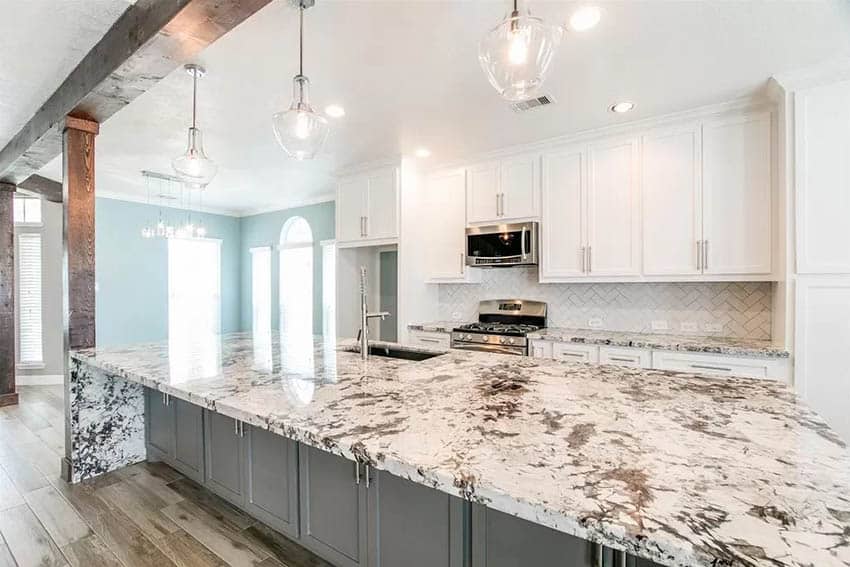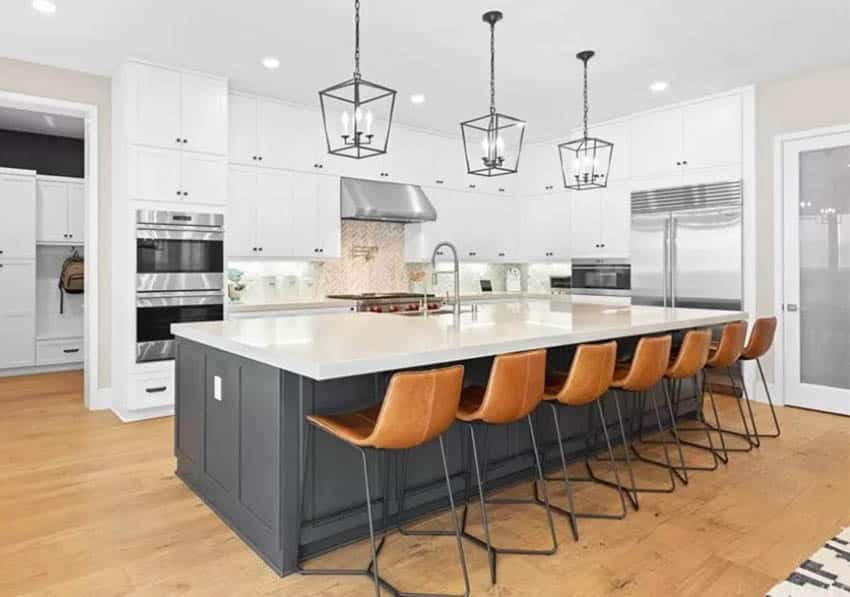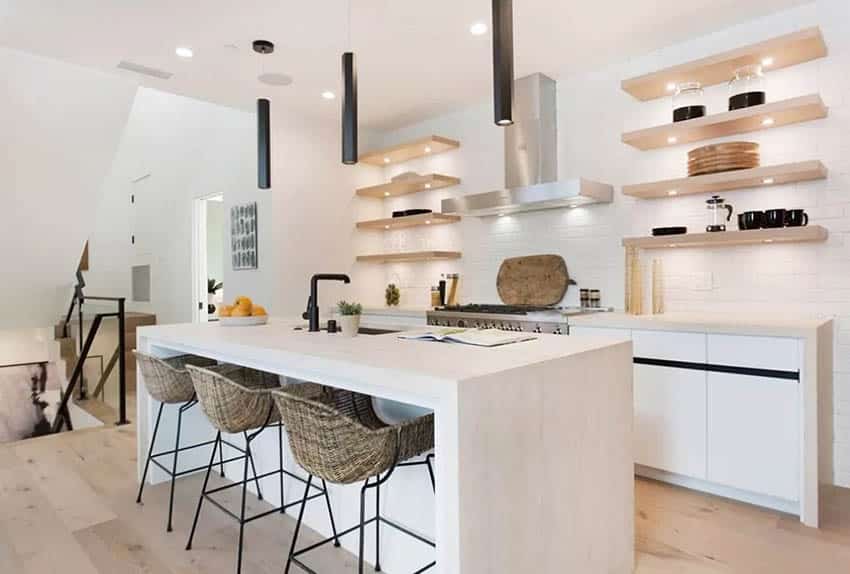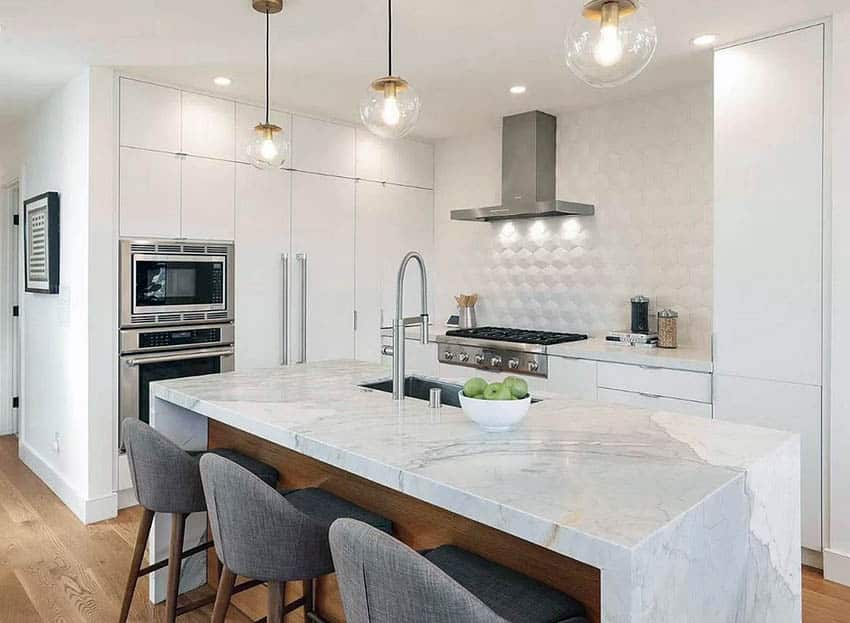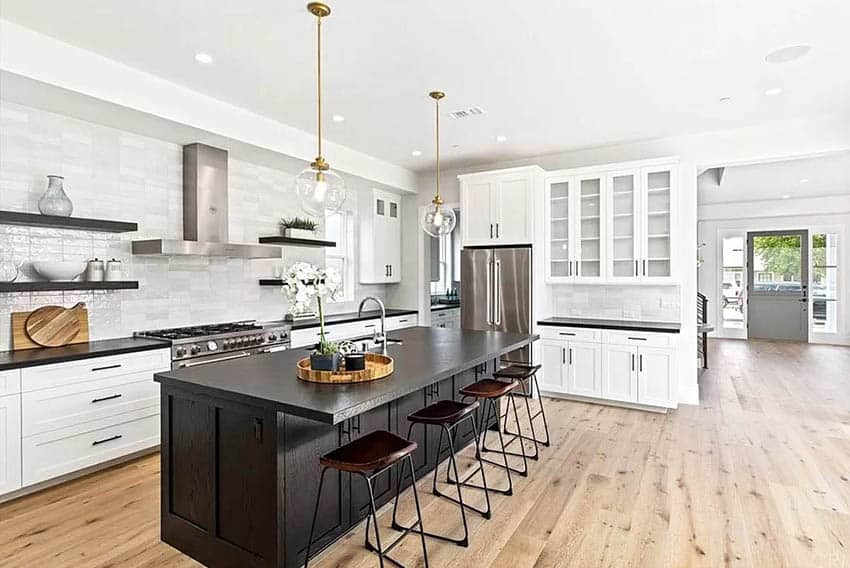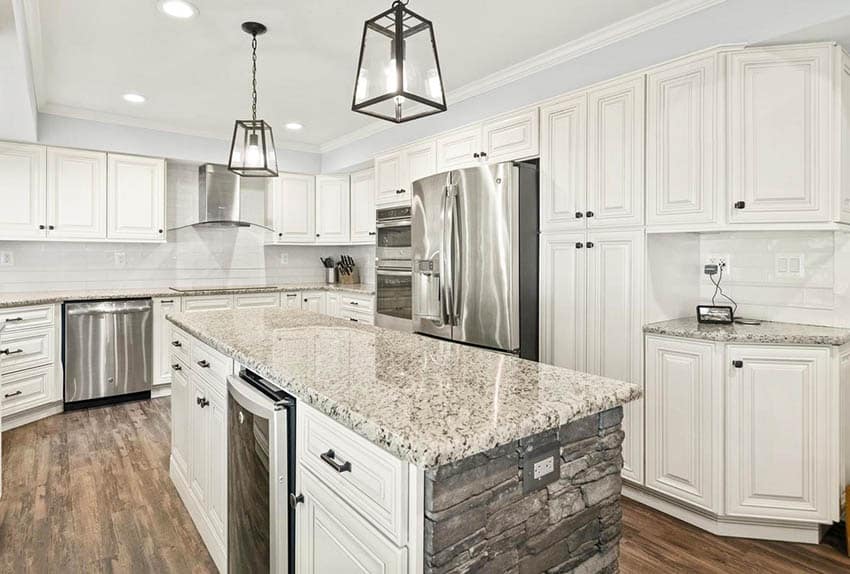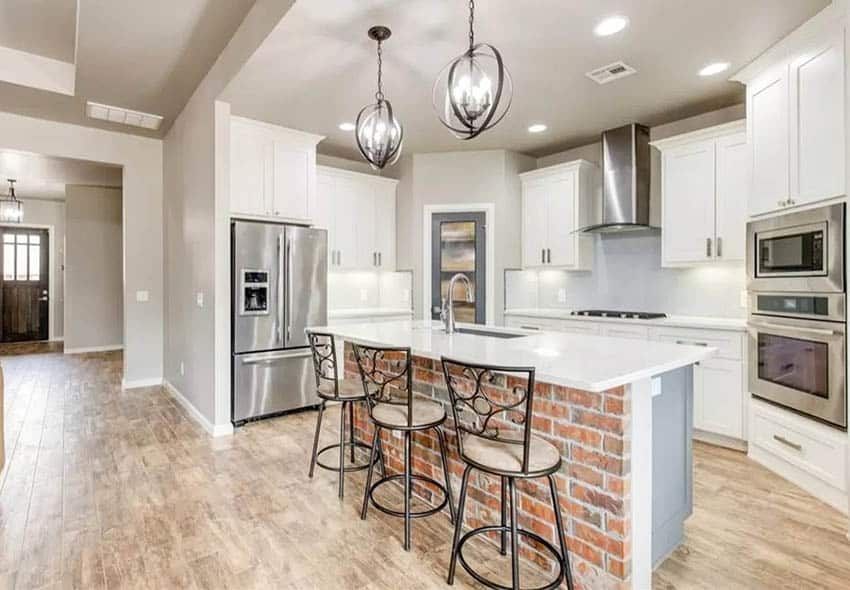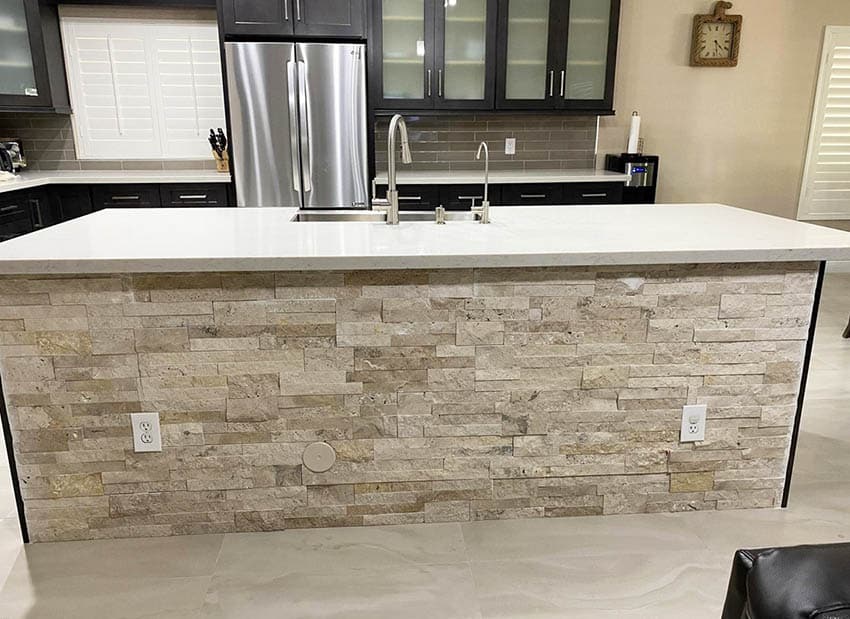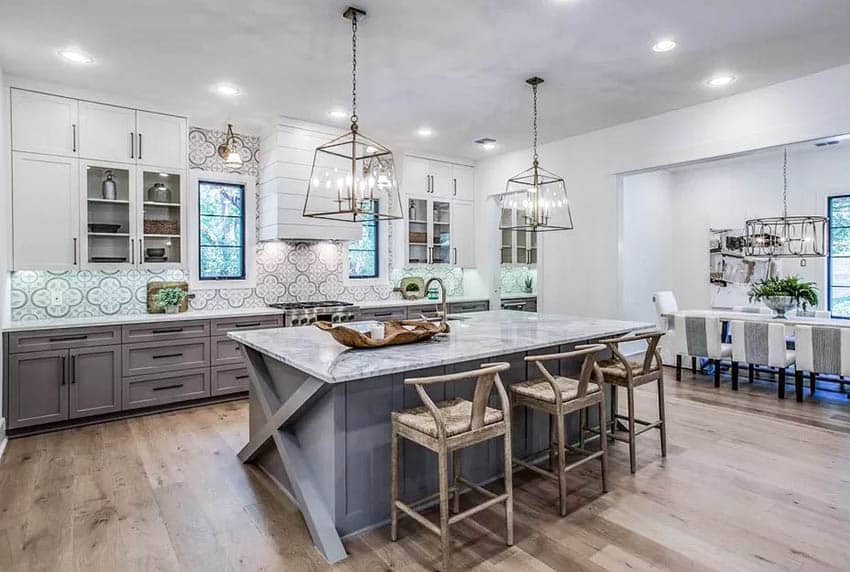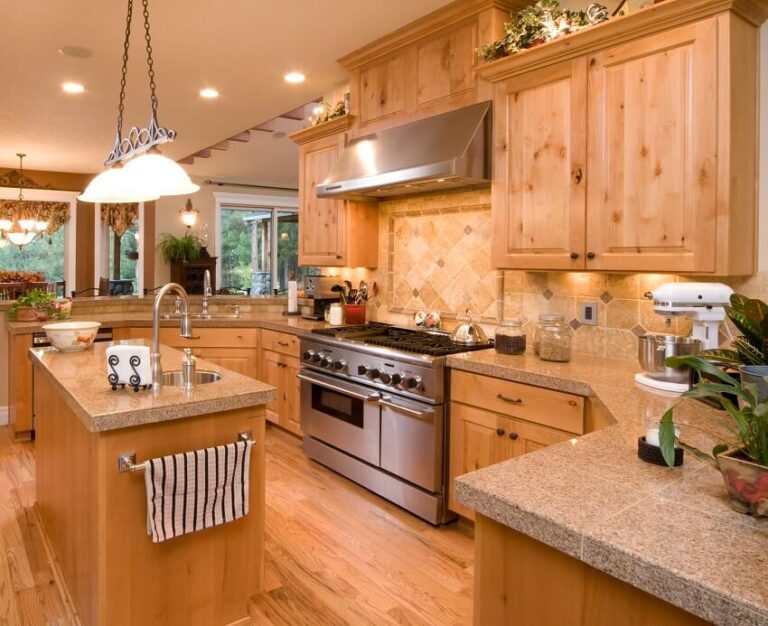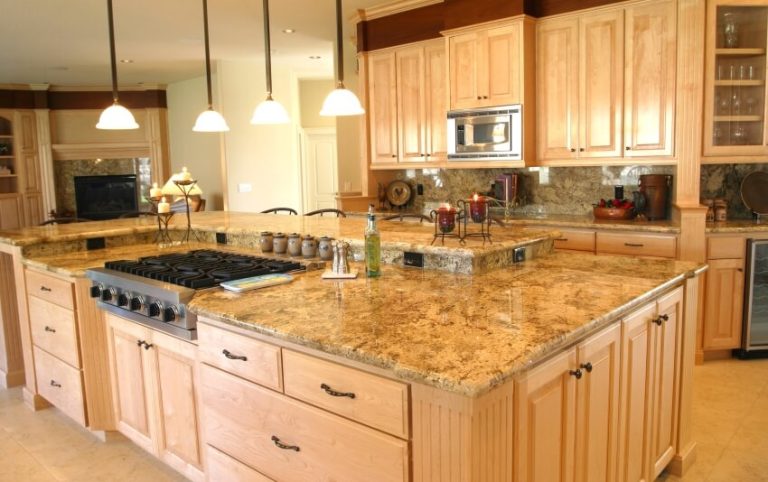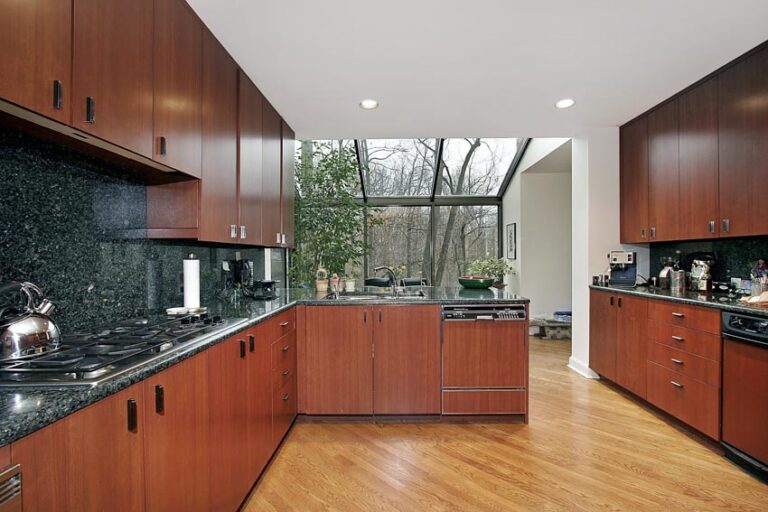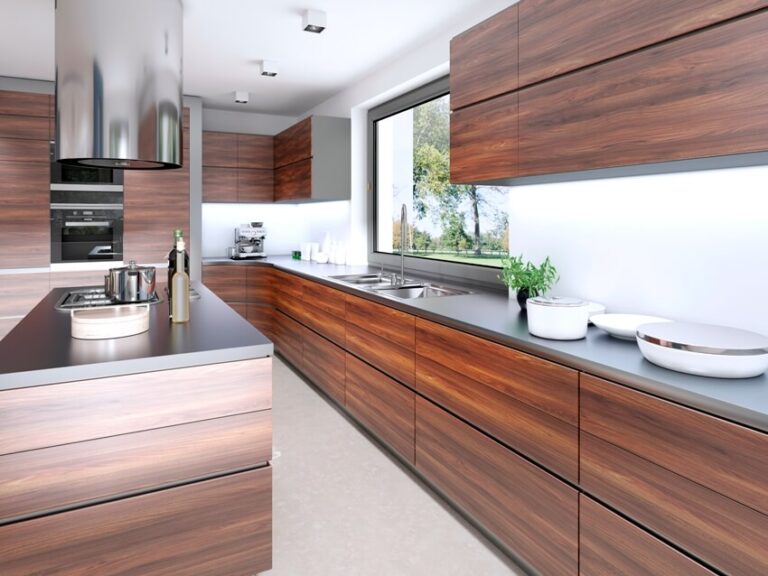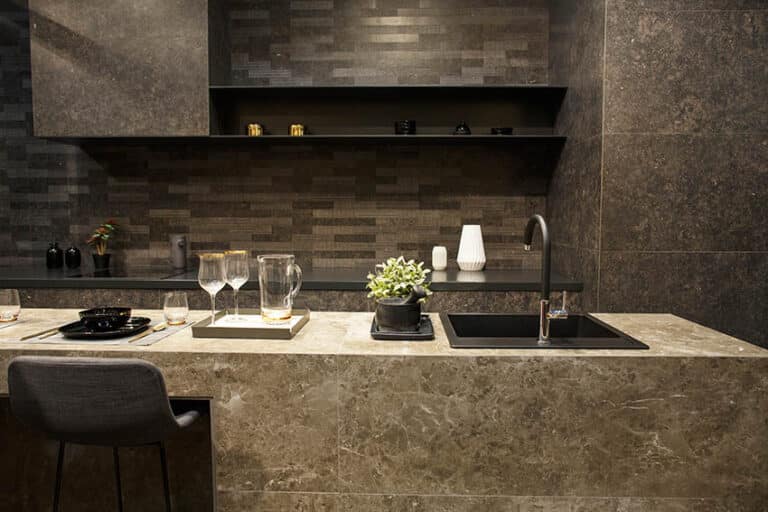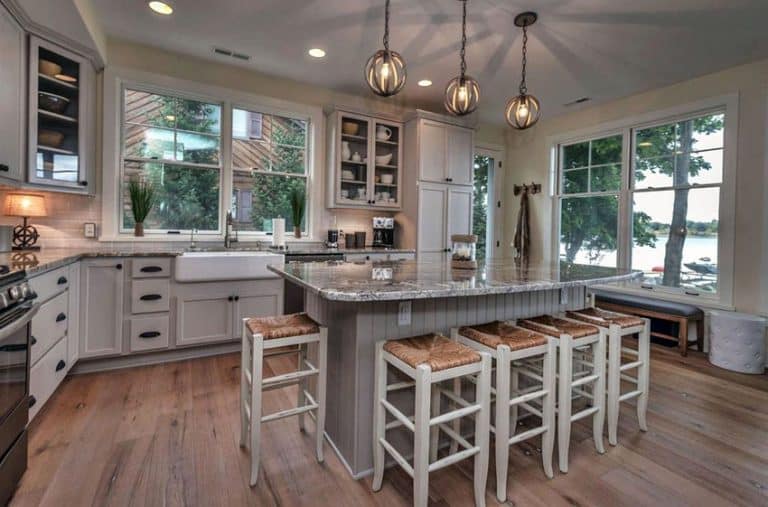Stone Kitchen Island Designs (7 Appealing Materials)
When it comes time to add a center island to your kitchen, there are several design ideas to choose from. Selecting stone kitchen island designs are often recommended due to their durability, resale value, and natural beauty.
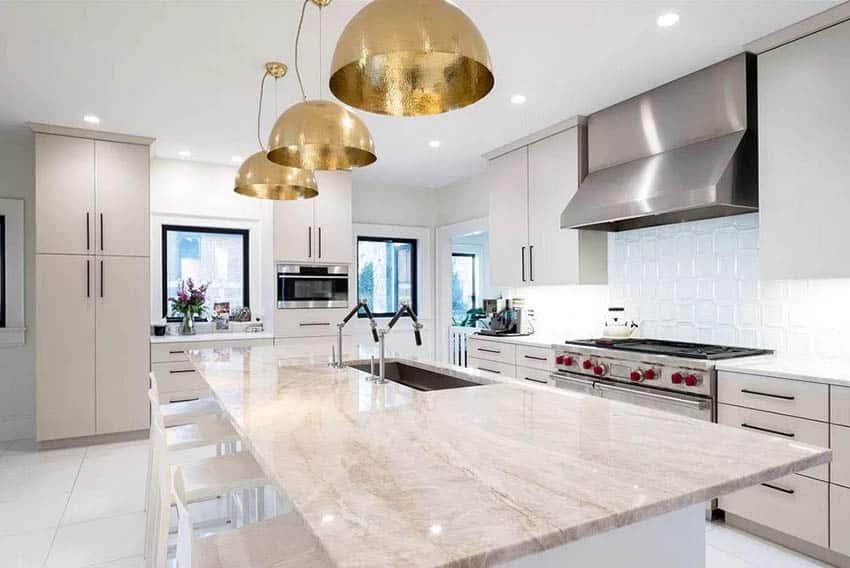
An important consideration when choosing stone countertops for your kitchen island are its characteristics, such as heat resistance, how porous the stone is, durability, and design options. Each type of stone material has specific pros and cons that influence your decision.
Types of Stone Kitchen Island Designs
Granite Countertops
Granite is a natural rock formed from molten rock that is compressed under the earth’s surface. Because of the mineral crystals, typically feldspar, quartz, and other minerals, each piece of granite is completely distinct. When you choose granite for your countertop, it will be unique. And that’s some of the beauty of using granite as part of your décor.
Granite is extremely heat resistant, can hold a lot of weight without fracturing, and is known for being durable and long-lasting. Although granite countertops are resilient, they are porous, requiring regular sealing and care to prevent stains and keep your surfaces looking beautiful.
Quartz Countertops
Naturally occurring quartz doesn’t form pieces large enough to cut slabs needed for countertops. Quartz countertops are made from engineered rock consisting of ground-up particles of leftover granite pieces, marble pieces, and waste materials from manufacturing ceramic, silica, glass, and mirrors.
These ground-up particles are then bound with plastic resins or cement-based binders. The process used to create quartz countertops results in a surface that is exceptionally resistant to heat, stains, and acid. Sealed with resin, quartz counters require no resealing or maintenance. And unlike granite, engineered quartz allows for predictable patterns and colors.
Katherine Wallis, an interior designer and director at Wallis Design, recommends choosing durable, easy-care materials for kitchen islands to withstand the heavy traffic and productivity of kitchens. She recommends materials that are scratch-resistant and easy to clean for both countertops and cabinetry.
Quartz Waterfall Countertops
During manufacturing, quartz can be fashioned into different shapes and forms, allowing for many applications, including countertops with a waterfall edge. This design incorporates a 90-degree angle at the end of the island’s countertop, continuing the slab of quartz to the bottom.
A waterfall edge creates a dramatic effect of the quartz pouring over the edge like water over a precipice, forming a stunning look. See our gallery of waterfall kitchen islands here.
Marble Countertops
Intricate veining and designs make marble an elegant and timeless selection for island designs. However, the higher price of marble typically limits its use in the cooking space. Reserving marble countertops provides the opportunity to distinguish the island from the rest of the culinary area.
Marble is long-lasting but needs regular care. Marble countertops are porous and susceptible to stains by liquids that are acidic, such as coffee, wine, or juice. Marble needs to be sealed approximately every three months to protect its surface.
Soapstone Countertops
Soapstone has a smooth, silky-feeling surface and was often used in older historic homes. Although it may seem softer, it’s still very hard and stain-resistant. Soapstone is typically found in deep, rich colors that may darken more over time, such as dark grays with hints of greens and blues.
As a culinary countertop, soapstone can tolerate heat, and scratches and damage can be sanded out. But the wear over time does create a sought-after patina, which naturally creates an antique appearance. Applying mineral oil to soapstone countertops can speed up the process of darkening the tones.
Stone Veneer Islands
Stone veneer is an alternative to heavier, higher-priced natural stones when you need to finish the sides of your center island. It is made from shaped molds filled with a mixture of concrete and iron oxides to create colored patterns that replicate natural stone. Using it for a countertop’s sides means more design choices, less cost, and the ability to easily replace the sides if your décor changes.
Brick Veneer Islands
Brick veneer is typically made of a polymer that creates a seamless, natural look of real brick, minus the hassle of the upkeep. Brick veneer panels come in multiple color schemes, making it easy to match the design of your culinary space. They are easy for a homeowner to install.
Brick siding is durable and resistant to damage, making it a long-lasting design component with the appearance of more costly and difficult-to-install brick. Brick veneer also comes as individual “faux bricks,” which are single bricks the same size as real bricks but much thinner and light-weight. See more brick kitchen island ideas here.
Stacked Stone Islands for the Kitchen
For a three-dimensional look, the stacked stone veneer offers a three-dimensional profile with variations in thickness, height, and texture. This adds visual interest to the center islands.
Stacked stone countertops are veneer panels made from horizontal pieces of stone that tightly fit together with different colors, surfaces, and sizes. There is no grout joint, so the material is more natural-looking, and the design adds focus to the stone itself.
These random strips of stone are glued together on a panel to adhere to the side surface of your island. A sealer can be used to prolong the natural colors and texture of the stone.
Whichever island countertop designs you consider for your space, both stone countertops and stone veneer allow you many choices for a stunning and functional island.
Considerations When Planning Your Island Design
When you consider an island for your home, think of its use; for extra storage and counter space, a culinary hub with cabinets and shelves below will create a convenient workstation.
If you want a more casual space for people to gather, be sure the island can accommodate barstools. If space allows, you can design a culinary hub that accomplishes both needs by combining cabinets and shelves below, with one end cut out for seating. Center islands can be simple or more elaborate with a sink and electrical outlets.
The next thing to consider is the design and materials for the culinary hub and how it will work with the existing theme of your culinary space. Mixing materials used for the countertops and the sides of the island results in a striking centerpiece with intriguing textures.
Visit this gallery for more pictures of kitchen island designs.

